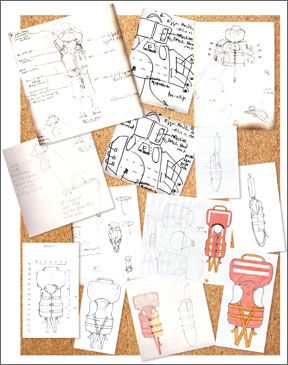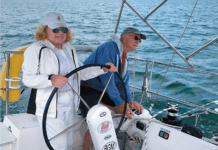Last summer, Practical Sailor rounded up 13 life jackets for an infant or toddler under 50 pounds. We put them through a series of tests with children ages 1 to 4 who weighed 20 to 35 pounds (“Childs Play, October 2006). We found four Type II personal flotation device (PFD) we liked, but none of them met our expectations. Practical Sailor testers decided to give our ideas to artist and industrial designer Sasha Cole. After several drafts, Sasha came up with an improved version of a life jacket for infants and toddlers weighing 20-30 pounds.

Last summer, Practical Sailor rounded up 13 life jackets for kids under 50 pounds. We put them through a series of tests with children ages 1 to 4 who weighed 20 to 35 pounds (“Childs Play,” October 2006). We found four jackets we liked, but none of them met our expectations. Testers decided to give our ideas to artist and industrial designer Sasha Cole. After several drafts, Sasha came up with an improved version of a life jacket for infants and toddlers weighing 20-30 pounds.
For comfort, the areas around the neck and sleeves were cut wide, and the foam flotation was tapered around the edges. Our flotation distribution closely mimicked our favorite jackets that we tested, the MTI Bay Bee 201-I and Mustang MV-3150 (see facing page), with a bi-fold head support and a small pillow of flotation in the back. These were the most effective in righting a face-down wearer and keeping them face-up in the water.
We used clip closures rather than zippers, which are a bear to zip up on a squirming kid. We liked the idea of a one-way clasp that kids could put on, but not take off, and we left it at that.
We added reflective tape and a pair of D-rings on the jacket front. As far as we know, there is no jacket in this size marketed in the U.S. that has either of these key features. We added another D-ring to the back of the jacket, so parents can keep toddlers within reach while on the dock without having to carry them – or resort to handcuffs.
As soon as the Practical Sailor life jacket left the drawing board, we found several features wed change or add, but we have a few other projects to attend to. We hope that someone might pick up where we left off and produce an infant jacket that actually does what its supposed to do – keep kids safe and comfortable on the water and give their parents peace of mind.








































